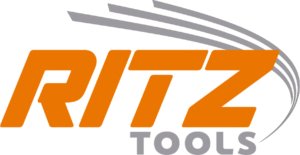In the high-stakes world of power distribution and utility maintenance, linemen play a vital role in keeping our lights on and our homes powered. While everyone knows the essential job of a lineman – climbing poles and repairing power lines – there’s a world of advanced equipment and techniques that sets the experts apart. In this blog post, we’ll delve into the realm of advanced electrical network efficiency and techniques that go beyond the basics.
Smart Metering Solutions
Smart metering solutions have revolutionized the way we monitor and manage electrical networks. These devices provide real-time data on energy consumption, allowing utilities and consumers to make informed decisions about energy usage. With smart meters, you can identify inefficiencies and address them promptly, reducing wasted energy and costs.
Voltage Optimization Systems
Voltage optimization systems play a vital role in maintaining electrical network efficiency. These systems regulate voltage levels to ensure they remain within the desired range. By preventing voltage fluctuations, voltage optimization tools help extend the lifespan of electrical equipment, reduce energy losses, and improve overall network reliability.
Energy Management Software
Energy management software is a powerful tool that enables businesses and organizations to monitor, analyze, and control their energy consumption. These platforms provide insights into energy usage patterns, helping identify areas where energy can be conserved. By implementing energy management software, you can create customized strategies to reduce energy costs and minimize waste.
Power Factor Correction Equipment
Power factor correction equipment is essential for industrial and commercial facilities. This technology optimizes the ratio of real power to apparent power, reducing energy losses caused by inefficient power factor. By improving power factor, you can reduce electricity bills and free up capacity in your electrical network for additional loads.
Fault Detection and Diagnostics Systems
Faults and disruptions in electrical networks can lead to downtime and costly repairs. Fault detection and diagnostics systems use advanced algorithms and sensors to identify issues in real time. These tools enable swift response to faults, minimizing downtime, and ensuring the network operates efficiently.
Why These Tools Matter
Now that we’ve explored the key tools for improving electrical network efficiency let’s delve into why they matter.
Efficiency Saves Money: Using these tools to optimize electrical networks reduces energy waste, ultimately lowering electricity bills for both consumers and businesses.
Sustainability: Efficient electrical networks consume fewer resources, making them more environmentally friendly by reducing greenhouse gas emissions.
Reliability: Tools like voltage optimization and fault detection systems enhance network reliability, minimizing unexpected disruptions.
Longevity: By reducing wear and tear on electrical equipment, these tools extend the lifespan of critical assets, saving money on replacements.
Wired for Success
In a world where energy conservation and sustainability are paramount, optimizing electrical network efficiency is crucial. The right tools, such as smart metering solutions, voltage optimization systems, energy management software, power factor correction equipment, and fault detection systems, play a pivotal role in achieving these goals. By embracing these technologies, we can create a more efficient, reliable, and sustainable electrical network for the future.
In summary, the path to a wired-for-success electrical network involves using the right tools to monitor, control, and optimize energy consumption. These tools not only save money but also contribute to a greener and more resilient energy infrastructure. So, whether you’re a homeowner looking to reduce your electricity bill or a business owner aiming to enhance operational efficiency, these tools are your keys to success in the electrified world of today and tomorrow.
1. Question: “What are the benefits of using Ritz tools for electrical network efficiency?”
Answer: Ritz tools are known for their high quality and performance in optimizing electrical networks. Some key benefits include enhanced energy monitoring, reduced energy waste, improved reliability, and extended equipment lifespan. These tools help users save money, reduce their environmental footprint, and minimize downtime.
2. Question: “How does Ritz’s voltage optimization system work?”
Answer: Ritz’s voltage optimization system regulates voltage levels within the desired range, preventing fluctuations that can damage electrical equipment. By maintaining a stable voltage, this system minimizes energy losses, extends the life of assets, and ensures the efficient operation of electrical networks.
3. Question: “Can Ritz’s fault detection and diagnostics systems prevent electrical network failures?”
Answer: Yes, Ritz’s fault detection and diagnostics systems are designed to identify issues in real time, allowing for prompt responses to prevent or mitigate electrical network failures. These systems play a crucial role in minimizing downtime and ensuring network reliability.
4. Question: “How can Ritz’s power factor correction equipment reduce electricity bills?”
Answer: Ritz’s power factor correction equipment optimizes the ratio of real power to apparent power, improving power factor. By doing so, it reduces reactive power consumption, leading to lower electricity bills. Businesses and industries can benefit from reduced energy costs and increased network capacity.
5. Question: “What makes Ritz’s energy management software stand out?”
Answer: Ritz’s energy management software offers advanced features such as real-time energy consumption monitoring, data analysis, and customized energy-saving strategies. It stands out for its user-friendly interface, actionable insights, and the ability to help users identify areas where energy can be conserved effectively.


